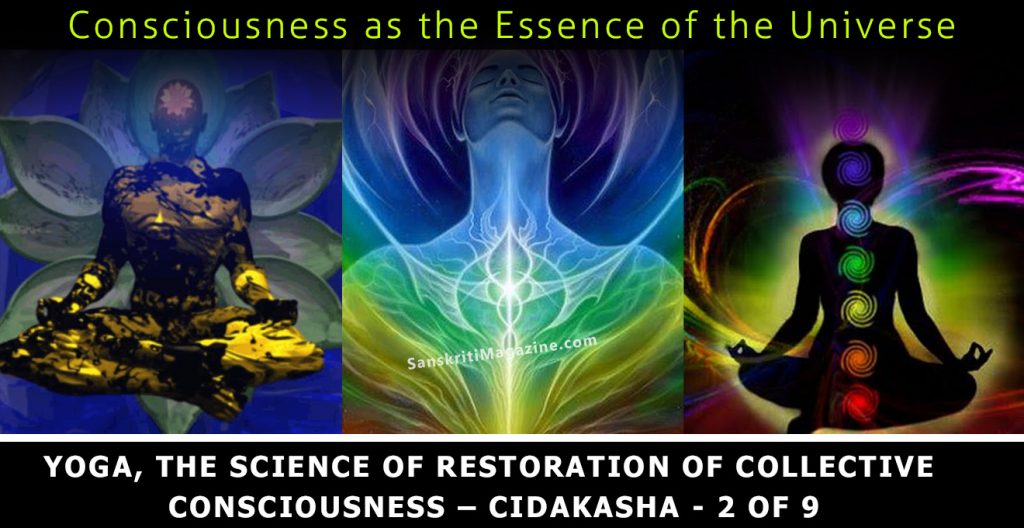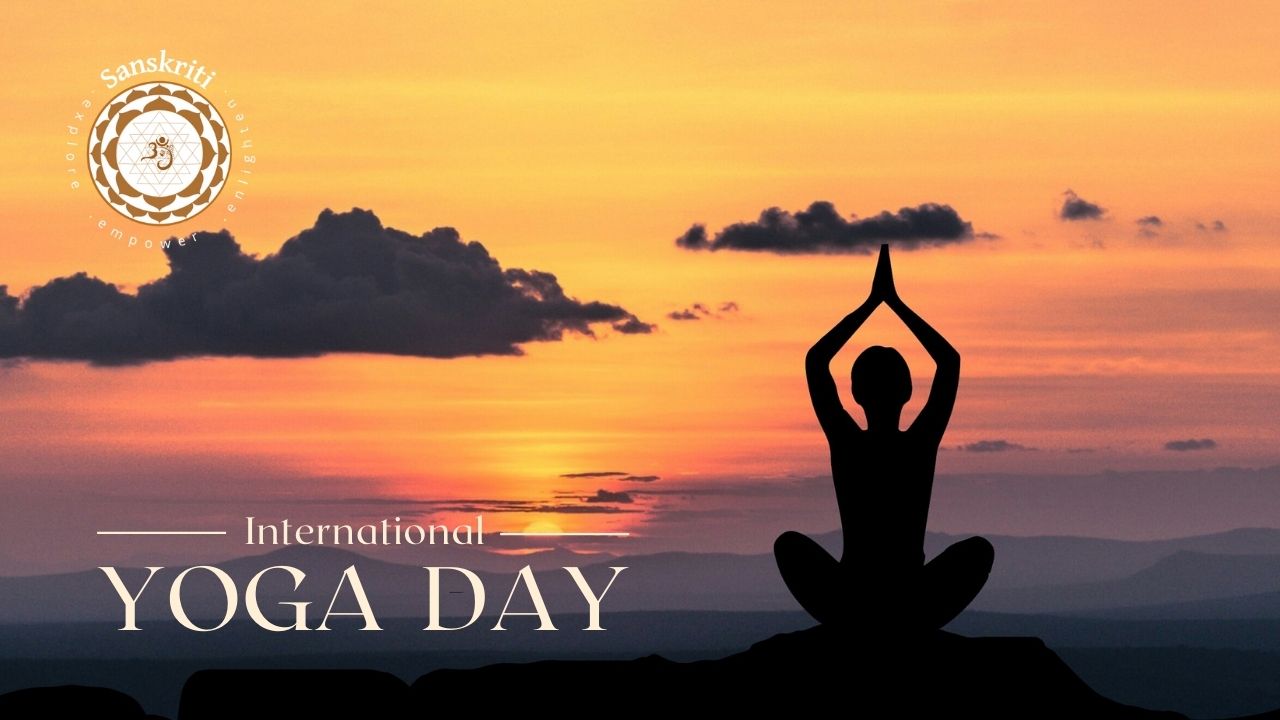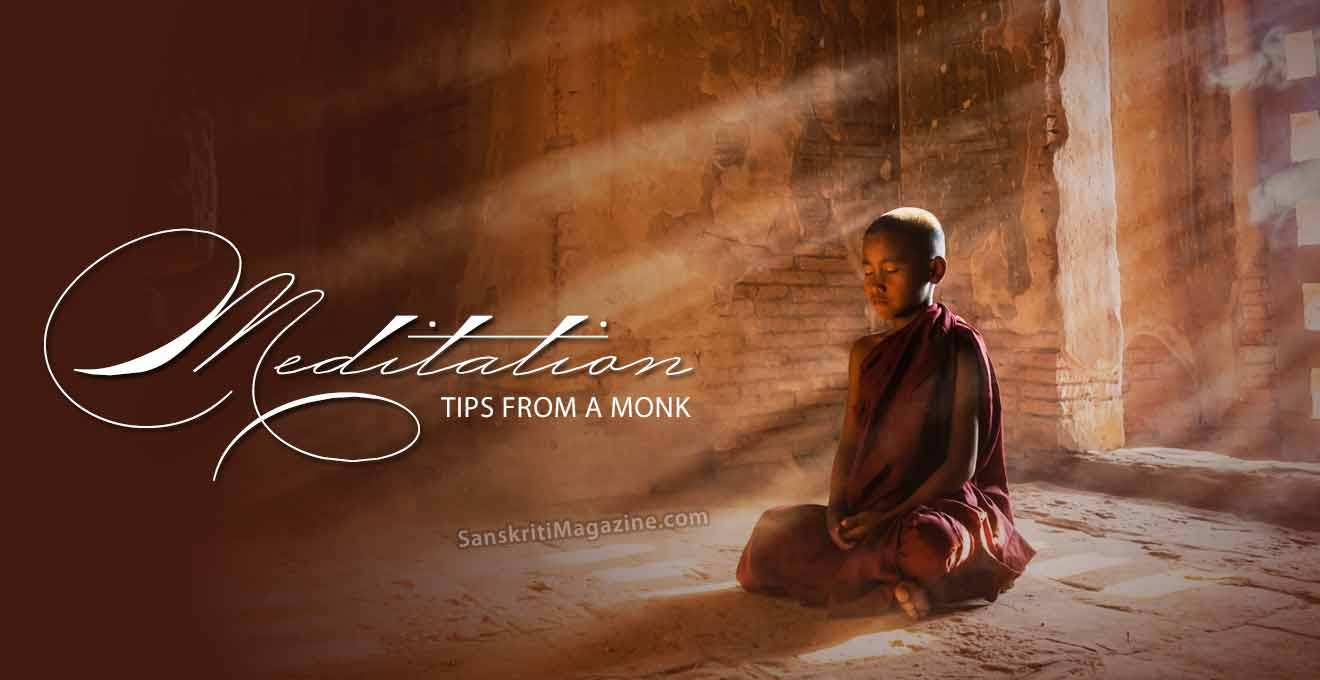Consciousness as the Essence of the Universe
~ by Yogi Mukesh (Exclusive for Sanskriti Magazine)
According to Yoga Consciousness is the essence of the reality and this becomes evident if we look into its involvement in the making as well as understanding of the totality of the being in the midst of which we find ourselves. Had consciousness not been there, anything anywhere would not have been made the object of cognition on any level, be it perceptual, emotional or intellectual. Shorn of such cognition, it would have been extremely deficient in its being. It does not mean that nothing is there in existence apart from our consciousness of it. As a matter of fact, things do exist, whether we are conscious of them or not.
There is, however, a difference between consciousness as such and one imbued with consciousness, in the same way as there is a difference between matter as such and anything material. Consciousness cannot preclude matter in the same way as matter cannot preclude consciousness. Matter requires consciousness for its cognition while consciousness stands in need of something other than itself to serve as the object for getting actualised its basic nature of being conscious.
Kshemaraja in his commentary on Shiva Sutra III.30, describes Consciousness by quoting from Kalikakrama:
Consciousness shines in various external and internal forms. There is no existence of objects apart from consciousness. Therefore, the world is simply a form of consciousness. Objects are not known by anybody without consciousness. It is consciousness that has assumed the forms of objects. It is through consciousness that objects are ascertained. Through the application of affirmation and negation, there is division of existents either as positive or negative. The objectivity of existents through the operation of consciousness is only a form of consciousness itself. ”
To be conscious is the fundamental nature of consciousness. Being self-conscious form the most fundamental nature of consciousness. Anyone cannot be conscious of anything unless he is self-conscious. In view of the possibility of being conscious of anything in the universe, we cannot detract from the possibility of consciousness being the fundamental nature of the universe and hence everything has its origin in consciousness. This is what Taittirya Upanishad (II.1) suggests when it observes that it is from Atman that has emerged space followed by the emergence of air, fire, water and earth from what precedes it.
While fire, as the basic stuff of the world of matter, is a product of the space-time continuum, consciousness lies in transcendence of the same continuum. This feature of consciousness is evident from the absoluteness of its velocity coinciding with simultaneity. While light will take billions of years to go across the universe, if at all it can do so in view of the velocity of the expanding universe itself, consciousness can reach from end to end of it within no time at all, no matter howsoever expanding or static it be. All theories about the universe, as well as those formed on the structure of the microscopic shape of matter, are works of consciousness vindicating thus the reach of consciousness to the macrocosmic as well as the microscopic level. Reach of consciousness to both these ends of the universe from the viewpoint of magnitude also and that, too, through it as embodied in the individual, is suggestive of the all-pervasiveness of it. In fact, when the Rigvedic seer observes that word is as expansive as the Reality itself, he speaks more of the consciousness, whose mouthpiece the word is, than of the word itself (RV X.114.8). Word is the bearer of consciousness by virtue of having been shaped by it as such. If the word can be all-pervasive, why not much more so be the consciousness borne by it?
Consciousness is expansive as well as contractive. If it encompasses the whole universe and even goes beyond the same in its expansive move, it has the capacity of getting withdrawn to the man’s psychic being who is just a being of self-awareness shorn of dimensions. This behavior of it evinces its extreme agility and flexibility on account of their immeasurability.
If expansive nature of consciousness is responsible for the emergence of the universe out of it via space itself, as Taittiriya Upanishad states, the contractive nature of it is the cause of the multiplicity of beings and objects in that universe. Exclusiveness of the concentricity gives birth to exclusive individualities. Not to speak of the exclusiveness of the human individuals as also of the subhuman beings from the viewpoint of their exclusiveness from one another, even atoms and particles must have their individualities not condescending to forego in any case. So is the case with the human individual. Nobody wants to get exchanged with the other in the core of his being. Everybody seeks to remain himself under all circumstances, howsoever adverse. The drive for individuality is, indeed, a by-product of the concentricity of consciousness.
© 2017 Sanskriti Magazine. All rights reserved.








 Chaitra Navratri Day 4: Worship of Maa Kushmanda – The Cosmic Creator of Light and Life
Chaitra Navratri Day 4: Worship of Maa Kushmanda – The Cosmic Creator of Light and Life 
 Chaitra Navratri Day 3: Worship of Maa Chandraghanta – The Goddess of Courage & Grace
Chaitra Navratri Day 3: Worship of Maa Chandraghanta – The Goddess of Courage & Grace 
 Chaitra Navratri Day 2: Worship of Maa Brahmacharini – The Path of Devotion & Knowledge
Chaitra Navratri Day 2: Worship of Maa Brahmacharini – The Path of Devotion & Knowledge 
 Chaitra Navratri Day 1: Worship of Maa Shailaputri – The Embodiment of Strength & New Beginnings
Chaitra Navratri Day 1: Worship of Maa Shailaputri – The Embodiment of Strength & New Beginnings 